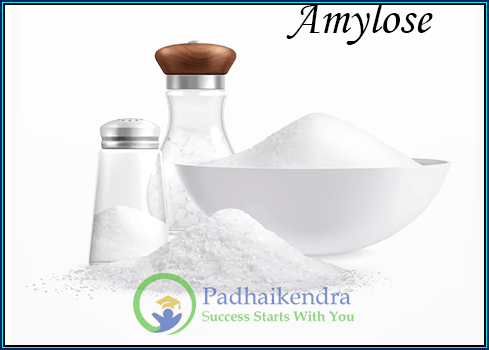Starch is a natural polysaccharide that is found in plants and serves as a major storage carbohydrate. It is a complex polymer consisting of glucose units linked together by alpha-glycosidic bonds. Starch is colorless, odorless, and tasteless, and is a common component in a wide range of foods, including grains, potatoes, and root vegetables.
Starch is composed of two types of polysaccharide molecules:
- amylose
- amylopectin.
Amylose and Amylopectin
Amylose and amylopectin are the two types of polysaccharide molecules that make up starch.
Amylose is a linear chain of glucose molecules that are linked together by alpha-1,4 glycosidic bonds. It is a relatively simple molecule that makes up about 20-30% of the starch in plants. It has a helical structure that makes it more resistant to digestion by enzymes.
Amylopectin, on the other hand, is a highly branched molecule that makes up the remaining 70-80% of starch in plants. It is composed of chains of glucose molecules that are linked by alpha-1,4 glycosidic bonds and are branched by alpha-1,6 glycosidic bonds. This branching allows for more efficient storage of glucose and provides more surface area for enzymes to break down the molecule into glucose.
The ratio of amylose to amylopectin can vary depending on the type of plant and the part of the plant where the starch is stored. Some plants, such as potatoes, have a higher amylopectin content, while others, such as rice, have a higher amylose content. The properties of starch, such as its solubility, viscosity, and gelatinization, are influenced by the ratio of amylose to amylopectin.
Differentiate Between Amylose and Amylopectin
| Features | Amylose | Amylopectin |
|---|---|---|
| Molecular structure | Consists of linear chains of α-D-glucose units linked together by α-(1,4) glycosidic bonds | Consists of highly branched chains of α-D-glucose units linked together by α-(1,4) and α-(1,6) glycosidic bonds |
| Molecular weight | Lower molecular weight | Higher molecular weight |
| Solubility in water | Insoluble in cold water, partially soluble in hot water | Insoluble in cold water, completely soluble in hot water |
| Granule structure | Granules are smaller and more compact | Granules are larger and less compact |
| Function | Acts as a straight-chain region and helps in the formation of a starch paste | Acts as a branched-chain region and helps in the synthesis of starch granules |
| Occurrence | Found in higher amounts in plants like rice, wheat, and potatoes | Found in higher amounts in plants like corn, barley, and oats |
Note: α-D-glucose units refer to the isomer of glucose in which the hydroxyl group on carbon-1 is located below the plane of the ring.





